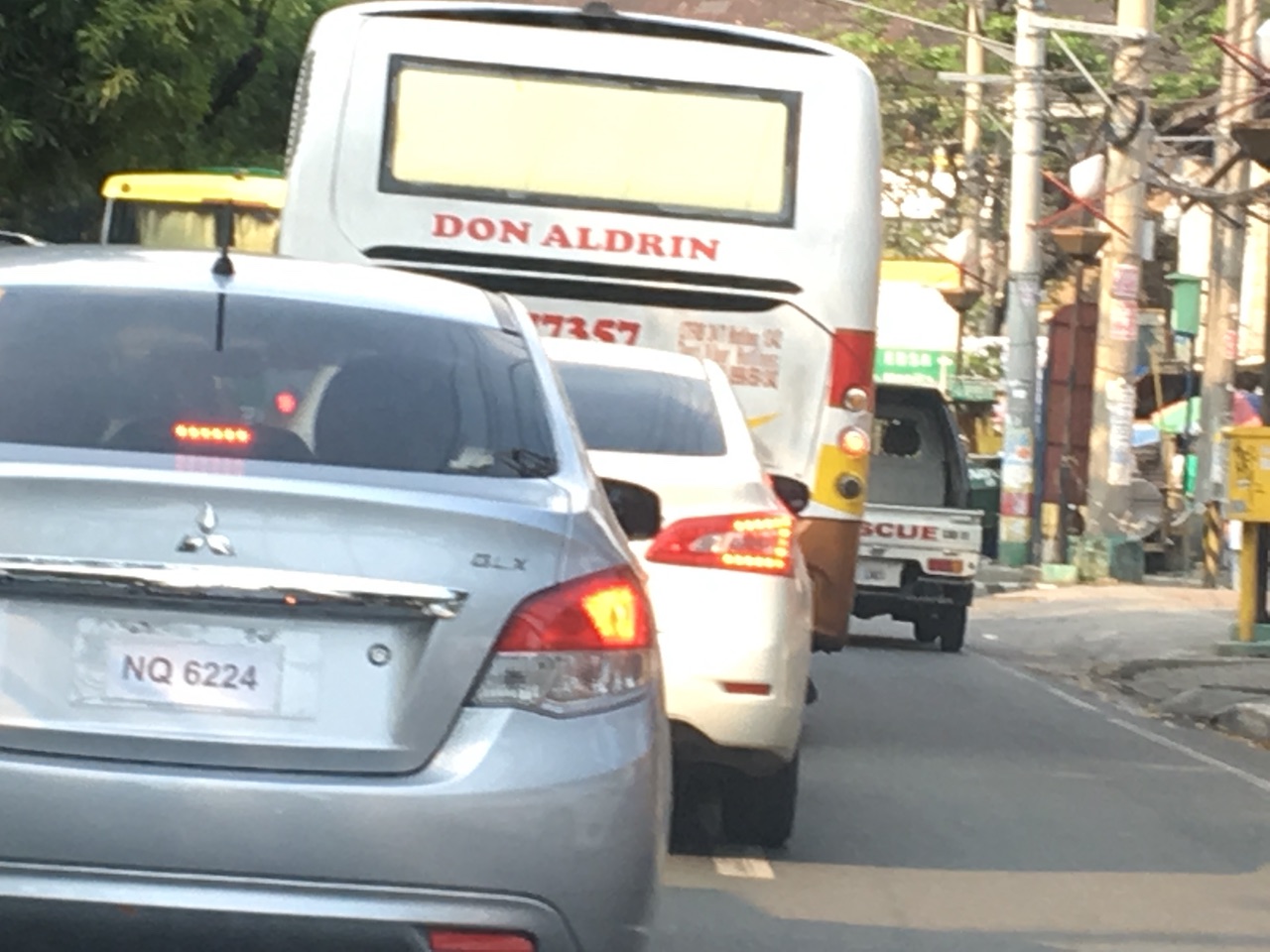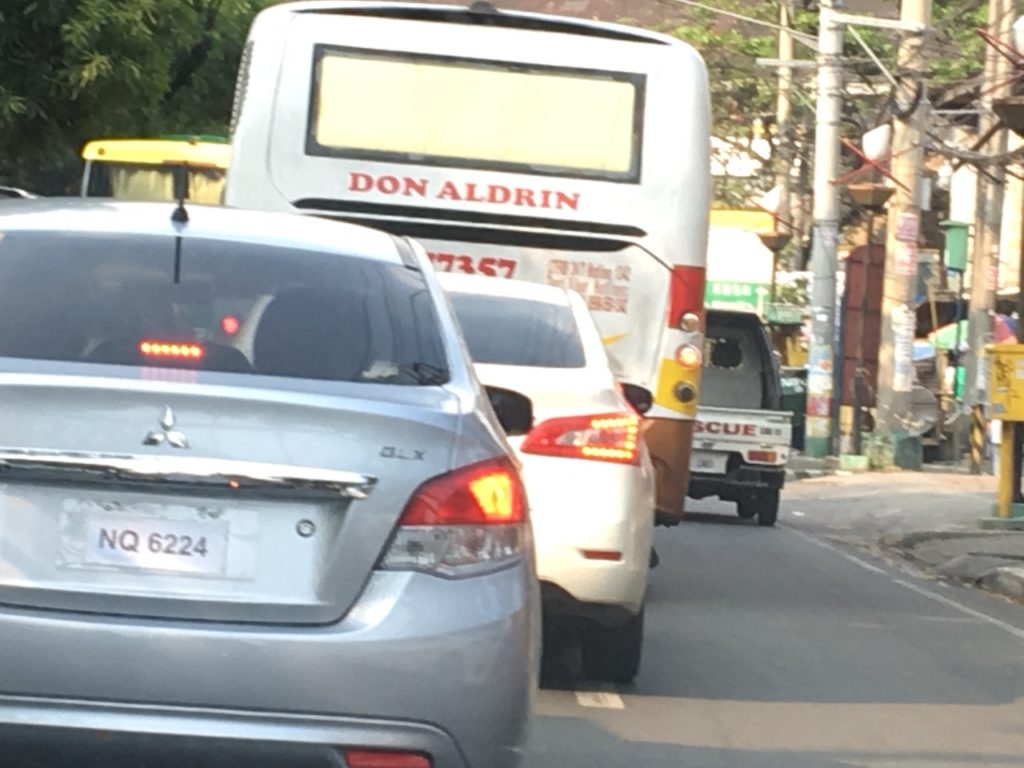Are women safe taking transport network vehicles (TNVs) in the Philippines?
I thought so. In my extended family, we are overwhelmingly female — sisters, cousins, nieces. It has been more convenient for most of us to take a TNV around the metro. I also know of some female friends who gave up their cars in favor of TNVs. My kids took Uber until they closed shop. We had no issues then with Uber. These days, with Uber gone, they have no other option but to use Grab. The newer TNV companies, while an option, are not as established as Grab which has a wider network of vehicles. I was confident they were all safe taking this mode of transport.
It had to take an incident with my daughter a few weeks before Christmas, involving a Grab car, for me to sit up, pay attention, and ask the hard question. Just how safe are women passengers in TNVs?
My daughter had come from an event in the south (in an area not familiar to her). She was going to my sister’s home nearby to spend the night. She originally wanted to take Grab Share so she would have a companion at least part of the way but as none was available, she ended up taking a Grab Car. Her traumatic experience with her Grab driver went as follows:
- He began quizzing her on why her boyfriend was not with her (If someone asked me this, my inner security alarm would surely go off)
- He kept on asking her other personal questions like how old she was, where she went to school, etc. (This is invasion of privacy and out of line for any TNV driver!)
- He mentioned he was half Pakistani and that his looks make some people think he is a terrorist (Who would not freak out at this statement or mention of the word ‘terrorist’?)
- The worst part was when he asked if they could pass a McDonald’s drive-thru because he was hungry. (By then, my daughter was so scared of the driver and refused to have him detour, saying her cousins were already waiting for her.)
As soon as I learned about the incident, I posted on Facebook that there was an incident involving a Grab driver and my daughter. Several friends messaged me, openly and privately, and related their own experiences. Here are some of their stories.
- Some drivers’ comments about their looks or personal questions made them uncomfortable.
- A friend related how a driver was seemingly drunk and rude during her ride. Because she was having a bad experience she had to threaten the driver so he would pull over and drop her off. She said he kept on cursing till she got down. The next Grab driver she got was nicer and helped her report the incident.
- Another friend barred her daughter from taking Grab after a driver took her on a long route to their home. Her daughter was too scared to ask why he was going in the wrong direction.
- One driver took a screenshot of the route to a friend’s house. Grab insisted that the driver had no malicious intent (background story: my friend and the driver had an issue with her pickup point and he took the screenshot to prove his point). Still…the screenshot, by itself, is an action that violates the privacy of any passenger — more so a female passenger. To add to the unpleasant experience, the driver went back, through traffic, to try and return my friend to her pickup point. She got off immediately as she was in a hurry.
Recently, this also made news. A TNV driver attacked a female passenger. Fortunately, she was able to grab hold of a toothbrush in her bag which she was able to stab into the driver’s eye. The driver ended up in the emergency room of a hospital. Did that involve a Grab driver?
I am bothered that the focus of TNVs like Grab may be more on the business/operational side rather than the safety side. Is enough being done to 1) prevent these situations from happening in the first place and 2) ensure that if they do happen, they are treated very seriously by the TNV company?
A threat to the safety of a passenger, most specially a female passenger, coming from a TNV driver himself, is not a simple operational violation. It reflects a serious flaw in the screening and hiring process of the company. Are there psychological exams administered to filter drivers who may be prone to violence? As commuters, we know there are risks we are exposed to such as vehicular accidents, a car breakdown, or other similar incidents. But we should never have to face the risk of a physical threat from the TNV driver himself. The driver is the face of the TNV company and any negative act he makes directly impacts the image of the company. PUBLIC TRUST is the primary asset of a TNV company, not its network of drivers. A TNV company thrives when the public thinks its service is convenient and safe. Once the riding public loses its trust in the TNV company, that could have a direct impact on its bottomline or worse, negatively affect its business continuity.
Here is what I found wanting in our case.
1. The penalty imposed, in my view, was not commensurate to the gravity of the offense – We were informed that the driver was suspended for ten days but allowed to resume driving. He was also warned that he was on a watch list and would be permanently deactivated from the network if another incident involving him was reported. Grab told us the driver had a good history record.
I was not happy he got off this easy. If his work record was really that good, how could he not know that his plan to detour to McDonald’s with a female passenger on board (any passenger, for that matter) was a clear and major violation of Grab operating policies? How could he treat a female passenger this way, making her feel unsafe, if he had adequate training? And for all that, he got off with only 10 days suspension and a warning? It made us feel as though Grab chose the welfare of the driver over ours.
2. Grab’s system has no blocking feature – My daughter was still willing to take Grab rides but wanted to make sure she never got this driver again. That is a reasonable request. After all, you would not want to take a ride again with someone you have filed a complaint against, right? So she asked Grab if it was possible to block him from ever accepting her as a passenger again. Guess what. Their system CANNOT block a driver from ever being matched again with a passenger. This is unacceptable! Friends told me that Uber had a blocking feature. I cannot imagine how such an important safety feature could be missing from Grab’s system.
3. Grab only communicated with us verbally the whole time – The updates given to me and my daughter were only by phone or chat app. When I asked the Grab official if an email was forthcoming, she said yes and to wait for it but as of this writing, neither my daughter nor I have received one. Some of my friends who also had a negative experience with Grab likewise said that the communication with them was verbal.
Serious complaints warrant a formal response from the TNV company. It lets the complainants feel that the TNV company is serious about their bad experiences. To relegate feedback to a verbal update only is treating the complaint as a minor service lapse instead of a safety issue that could have a life or death implication.
Healthy competition improves customer service. At the moment, Grab has no direct competitor (it used to be Uber until they ceased operations here) so there is no real impetus to tighten security and controls. All I can do is make an appeal for them to make women safety one of their priorities.
This is not a rant against Grab. On the contrary, I want TNV companies to succeed. Our public transportation system is so wanting that TNVs have become a welcome and acceptable alternative mode of commuting. However, safety is paramount and TNV companies like Grab should understand that while they cannot guarantee safety on the road at all times, they should at least be able to guarantee passenger safety in the presence of their drivers. I hope Grab takes my feedback as reason to tighten their system so I can once again be at peace knowing that when my loved ones take Grab, they will be brought to their destination safely.
I also hope the Land Transportation Franchising and Regulatory Board (LTFRB) can help make women safety a priority. If LTFRB can require a good passenger safety record as basis for allowing a TNV company to continue operating, maybe these companies will be more careful when screening their driver-applicants, training their drivers how to deal with/converse with female passengers, and becoming stricter with safety-related violations.



This is alarming! I used to take Uber, too, but switched to Grab when Uber ended their services. I agree with you that LTO and even Grab management should choose well their drivers. Safety should be everyone’s utmost priority. Thank God, your daughter is safe!
Yes, Meikah. It could have been worse. I hope they do something about women safety ASAP.